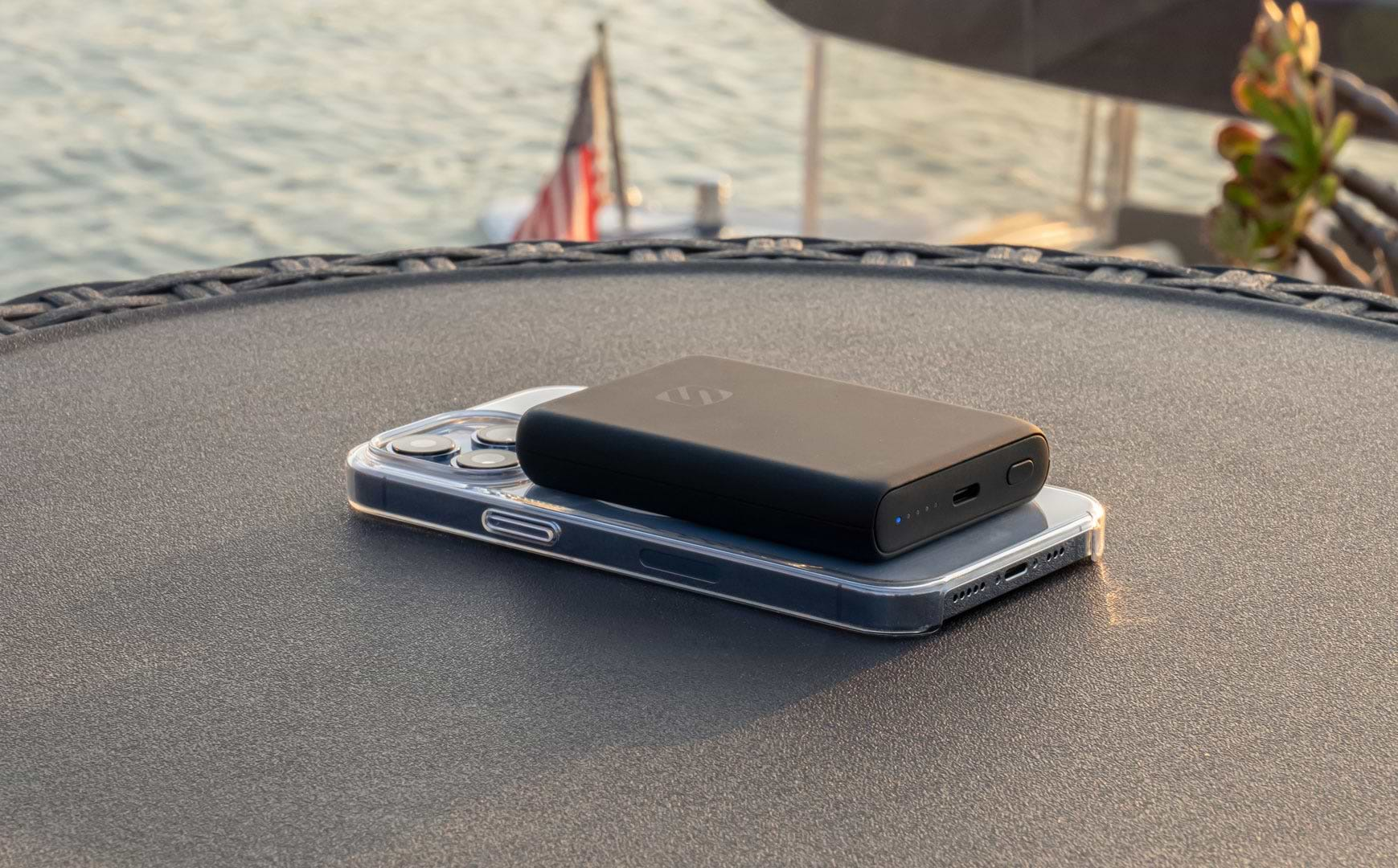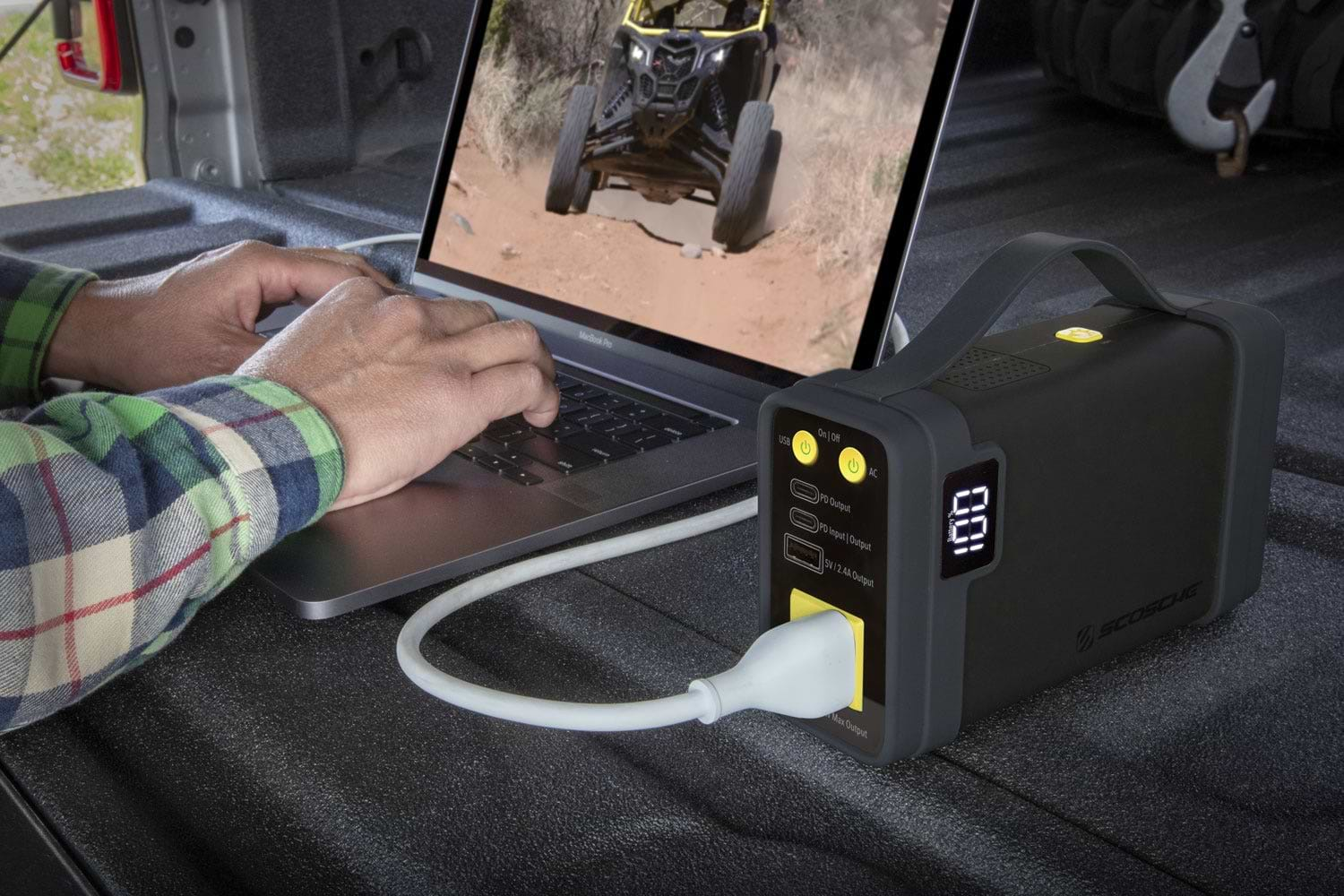Charging a Power Bank: Essential Steps & Tips

Power banks have become an essential accessory for keeping our electronic devices powered on the go. Whether you're traveling or simply away from a power outlet, having a power bank can ensure that your devices never run out of battery. However, it is important to understand how to properly charge a power bank to maximize its efficiency and lifespan.
In this article, we will explore the essential steps and tips for charging a power bank.
Understanding Power Banks
Power banks have become an essential accessory for many people in today's digital age. With the increasing reliance on smartphones, tablets, and other electronic devices, the need for a reliable and portable power source has become more important than ever. That's where power banks come in.
What Is a Power Bank?
A power bank, also known as a portable charger, is a compact and lightweight device that stores electrical energy and can be used to charge other electronic devices on the go. It essentially acts as a backup power source when you don't have access to a wall outlet or when you're traveling.
Power banks are equipped with a rechargeable battery inside, which stores the electrical energy when it is connected to a power source. This stored energy can then be used to charge your devices whenever needed. The capacity of a power bank is measured in milliampere-hours (mAh), which determines how much charge it can hold.
One of the main advantages of power banks is their portability. They are designed to be compact and lightweight, making them easy to carry in your bag or pocket. This makes them ideal for situations where you may not have access to a power outlet, such as during outdoor activities, travel, or emergencies.
Different Types of Power Banks
There are several types of power banks available in the market, each with its own capacity and features. Understanding the different types can help you choose the right power bank for your specific needs.
- Standard Power Banks: These are the most basic type of power banks and usually come in various capacities to suit different charging needs. They have a USB port or ports where you can connect your devices using a charging cable. Standard power banks are versatile and can charge a wide range of electronic devices, including smartphones, tablets, Bluetooth headphones, and more.
- Solar Power Banks: These power banks have solar panels built-in, allowing them to charge using sunlight. They are particularly useful for outdoor activities, such as camping, hiking, or beach trips, where access to a power source may be limited. Solar power banks harness the power of the sun to recharge their internal battery, providing you with a sustainable and eco-friendly charging solution.
- Wireless Power Banks: As the name suggests, these power banks can charge devices wirelessly using Qi-compatible technology. They eliminate the need for cables or connectors, offering a convenient and clutter-free charging experience. Wireless power banks are compatible with smartphones and other devices that support wireless charging, allowing you to simply place your device on the power bank's charging pad to initiate the charging process.


When choosing a power bank, it's important to consider factors such as capacity, charging speed, and compatibility with your devices. Higher capacity power banks can provide multiple charges for your devices, while fast-charging capabilities ensure quick and efficient charging. Additionally, some power banks come with built-in safety features, such as overcharge protection and short circuit prevention, to ensure the safety of your devices.
Overall, power banks have revolutionized the way we stay connected and powered up in today's fast-paced world. Whether you're traveling, camping, or simply need an extra boost of power during your daily activities, a power bank can be a reliable companion that keeps your devices charged and ready to go.
The Basics of Charging a Power Bank
Charging a power bank is a simple process that involves utilizing the power of lithium-ion or lithium-polymer batteries to store electrical energy. These batteries, known for their high energy density and long cycle life, are the key components that make power banks so efficient and reliable.
How Power Banks Work
When you connect your power bank to a power source, such as a wall charger or a computer, the internal batteries within the power bank start charging. This process involves the conversion of electrical energy from the power source into chemical energy, which is stored in the lithium-ion or lithium-polymer batteries.
Once the power bank is fully charged, it becomes a portable source of power that can be used to charge other devices, such as smartphones, tablets, or even laptops. This makes power banks incredibly convenient for those on the go, ensuring that you never run out of battery power when you need it the most.
The Importance of Proper Charging
Proper charging is crucial for maintaining the longevity and optimal performance of your power bank. To ensure that your power bank remains in top-notch condition, it is highly recommended to use the original charger that came with the device or a high-quality charger that provides the appropriate voltage and current for your specific power bank model.
Using a low-quality or incompatible charger can result in slower charging times and may even damage the power bank. It's always better to invest in a charger that is specifically designed for your power bank to ensure efficient and safe charging.
In addition to using the right charger, it is also essential to charge your power bank in a cool and well-ventilated area. High temperatures can have a detrimental effect on the battery's performance and lifespan. Therefore, it's best to avoid exposing your power bank to direct sunlight or extreme temperatures, as these can accelerate the degradation of the battery cells.
By taking these precautions and following the recommended charging practices, you can maximize the lifespan of your power bank and ensure that it remains a reliable source of power for all your portable devices.
Essential Steps to Charge a Power Bank
Preparing Your Power Bank for Charging
Before charging your power bank, ensure that it is clean and free from any dust or debris. Use a soft cloth to wipe the surface and remove any fingerprints. This will prevent any interference with the charging process and maintain the power bank's aesthetics.
It is also important to check the power bank's battery capacity before charging. Most power banks have a four-LED indicator that shows the battery level. Ensure that the power bank has enough charge to power your devices. If the battery level is low, it is recommended to charge the power bank before using it to charge your devices.
In addition, it is worth noting that different power banks have different charging requirements. Some power banks may require a specific type of charger or a certain voltage to charge efficiently. It is important to refer to the manufacturer's instructions or user manual for the recommended charging method for your specific power bank.
Step-by-Step Guide to Charging
To charge your power bank, follow these simple steps:
- Connect one end of the charging cable to the power bank's input port. Make sure the connection is secure to ensure proper charging.
- Plug the other end of the charging cable into a wall charger or a computer's USB port. Ensure that the power source is reliable and provides sufficient power output for efficient charging.
- Once connected, the power bank will start charging. The LED indicators may light up to show the charging progress. This can be helpful to monitor the charging status and estimate the remaining charging time.
- It is important to leave the power bank connected until it is fully charged. This may take a few hours, depending on the capacity of your power bank. It is recommended to avoid interrupting the charging process to ensure a complete charge.
- Once the power bank is fully charged, disconnect the charging cable from the power bank. This will prevent overcharging and prolong the lifespan of the power bank.
After charging your power bank, it is ready to be used to charge your devices. Simply connect your device to the power bank using the appropriate charging cable, and the power bank will supply the necessary power to charge your device. It is important to note that the charging speed may vary depending on the power bank's capacity and the device being charged.
It is recommended to store your power bank in a cool and dry place when not in use. Avoid exposing it to extreme temperatures or direct sunlight, as this can affect its performance and lifespan. Regularly checking and cleaning the power bank's charging ports and cables can also help maintain its functionality and prevent any charging issues.
By following these essential steps and taking proper care of your power bank, you can ensure efficient and reliable charging for your devices whenever you need it.
Tips for Efficient Charging
Maximizing Your Power Bank's Lifespan
To maximize the lifespan of your power bank, consider the following tips:
- Avoid overcharging your power bank. Once it is fully charged, promptly unplug it from the power source.
- Avoid fully discharging your power bank. Ideally, keep it charged above 20% to prevent deep discharges, which can reduce the battery's lifespan.
- Store your power bank in a cool and dry place when not in use. Avoid exposing it to extreme temperatures or humidity.
Safety Tips for Charging
When charging your power bank, keep these safety tips in mind:
- Use the provided charging cable or a certified cable. Avoid using cheap or damaged cables, as they can affect charging efficiency and pose a safety hazard.
- Avoid charging your power bank near flammable materials or liquids.
- If you notice any abnormalities, such as excessive heating or swelling, stop using the power bank immediately and contact the manufacturer.
Troubleshooting Common Power Bank Issues
Power Bank Not Charging
If your power bank is not charging, try the following troubleshooting steps:
- Check if the charging cable is securely connected to both the power bank and the power source.
- Use a different charging cable or wall charger to eliminate any issues with the accessories.
- Try charging the power bank using a different power source, such as a different wall outlet or USB port.
- If none of the above steps work, contact the manufacturer for further assistance.
Power Bank Charging Slowly
If your power bank is charging slowly, consider these possible causes:
- Use a charger with a higher output current. Some power banks support fast charging, which requires a charger with a higher current rating.
- Ensure that the charging cable is not damaged or frayed. A damaged cable can hinder efficient charging.
- Check if the power bank's input port is clean and free from any debris. Dirt or lint can disrupt the charging process.
Conclusion
In conclusion, charging a power bank correctly is essential for optimal performance and longevity. By understanding the basics of how power banks work and following the essential steps and tips discussed in this article, you can ensure efficient charging and maximize the lifespan of your power bank. Remember to always use high-quality charging accessories and follow the manufacturer's instructions for the best results. Happy charging!